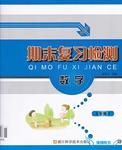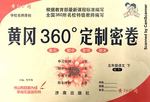
Fish Ears Tell Fish Tales
Fish have ears. Really. They’re quite small and have no opening to the outside world carrying sound through the body. For the past seven years, Simon Thorrold, a university professor, has been examining fish ears, small round ear bones called otoliths (耳石).
As fish grow, so do their otoliths. Each day, their otoliths gain a ring of calcium carbonate (碳酸钙). By looking through a microscope and counting these rings, Thorrold can determine the exact age of a young fish. As a fish gets older, its otoliths no longer get daily rings. Instead, they get yearly rings, which can also be counted, giving information about the fish’s age, just like the growth rings of a tree.
Ring counting is nothing new to fish scientists. But Thorrold has turned to a new direction. They’re examining the chemical elements (元素) of each otolith ring.
The daily ring gives us the time, but chemistry tells us about the environment in which the fish swam on any given day. These elements tell us about the chemistry of the water that the fish was in. It also says something about water temperature, which determines how much of these elements will gather within each otolith ring.
Thorrold can tell, for example, if a fish spent time in the open ocean before entering the less salty water of coastal areas. He can basically tell where fish are spending their time at any given stage of history.
In the case of the Atlantic croaker, a popular saltwater food fish, Thorrold and his assistant have successfully followed the travelling of young fish from mid-ocean to the coast, a journey of many hundreds of miles.
This is important to managers in the fish industry, who know nearly nothing about the whereabouts of the young fish for most food fish in the ocean. Eager to learn about his technology, fish scientists are now lending Thorrold their ears.
What can we learn about fish ears from the text?
A. They are small soft rings.
B. They are not seen from the outside.
C. They are openings only on food fish.
D. They are not used to receive sound.
Why does the writer compare the fish to trees?
A. Trees gain a growth ring each day.
B. Trees also have otoliths.
C. Their growth rings are very small.
D. They both have growth rings.
Why is it important to study the chemistry of otolith rings?
A. The elements of the otoliths can tell the history of the sea.
B. Chemical contents of otoliths can tell how fast fish can swim.
C. We can know more about fish and their living environment.
D. Scientists can know exactly how old a fish is.
How would you understand “fish scientists are now lending their ears”?
A. They are very interested in Thorrold’s research findings.
B. They want to know where they can find fish.
C. They lend their fish for chemical studies.
D. They wonder if Thorrold can find growth rings from their ears.
 期末复习检测系列答案
期末复习检测系列答案 超能学典单元期中期末专题冲刺100分系列答案
超能学典单元期中期末专题冲刺100分系列答案 黄冈360度定制密卷系列答案
黄冈360度定制密卷系列答案 阳光考场单元测试卷系列答案
阳光考场单元测试卷系列答案科目:高中英语 来源:人教社新课程2003年审核高二上册练习 人教社新课程2003年审核 题型:050
阅读下面短文,从每题所给的四个选项中选出最佳答案.
Fish have ears. Really. They're quite small and have no opening to the outside world carrying sound through the body. For the past seven years, Simon Thorrold, a university professor, has been examining fish ears, small round ear bones called otoliths.
As fish grow, so do their otoliths. Each day, their otoliths gain a ring of calcium carbonate(碳酸钙). By looking through a microscope(显微镜)and counting these rings, Thorrold can determine the exact age of a young fish. As a fish gets older, its otoliths no longer get dally rings. Instead, they get yearly rings, which can also be counted, giving information about the fish's age, just like the growth rings of a tree.
Ring counting is nothing new to fish scientists. But Thorrold has turned to a new direction. They're examining the chemical elements(元素)of each otolith ring.
The daily ring gives us the time, but chemistry tells us about the environment in which the fish swam on any given day. These elements tell us about the chemistry of the water that the fish was in. It also says something about water temperature, which determines how much of these elements will gather within each otolith ring.
Thorrold can tell, for example, if a fish spent time in the open ocean before entering the less salty water of coastal areas. He can basically tell where fish are spending their time at any given stage of history.
In the case of the Atlantic croaker, a popular saltwater food fish, Thorrold and his assistant have successfully followed the travelling of young fish from mid-ocean to the coast, a journey of many hundreds of miles.
This is important to managers in the fish industry, who know nearly nothing about the whereabouts of the young fish for most food fish in the ocean. Eager to learn about his technology, fish scientists are now lending Thorrold their ears.
(1)What can we learn about fish ears from the text?
[ ]
A. They are small soft rings.
B. They are not seen from the outside
C. They are openings only on food fish.
D. They are not used to receive sound.
(2)Why does the writer compare the fish to trees?
[ ]
A. Trees gain a growth ring each day.
B. Trees also have otoliths.
C. Their growth rings are very small.
D. They both have growth rings.
(3)Why is it important to study the chemistry of otolith rings?
[ ]
A. The elements of the otoliths can tell the history of the sea.
B. Chemical contents of otoliths can tell how fast fish can swim.
C. We can know more about fish and their living environment.
D. Scientists can know exactly how old a fish is.
(4)How would you understand “fish scientists are now lending their ears”?
[ ]
A. They are very interested in Thorrold's research findings.
B. They want to know where they can find fish.
C. They lend their fish for chemical studies.
D. They wonder if Thorrold can find growth rings from their ears.
查看答案和解析>>
科目:高中英语 来源:2010年浙江省金华一中高二上学期期中考试英语卷 题型:阅读理解
Fish Ears Tell Fish Tales
Fish have ears. Really. They’re quite small and have no opening to the outside world carrying sound through the body. For the past seven years, Simon Thorrold, a university professor, has been examining fish ears, small round ear bones called otoliths (耳石).
As fish grow, so do their otoliths. Each day, their otoliths gain a ring of calcium carbonate (碳酸钙). By looking through a microscope and counting these rings, Thorrold can determine the exact age of a young fish. As a fish gets older, its otoliths no longer get daily rings. Instead, they get yearly rings, which can also be counted, giving information about the fish’s age, just like the growth rings of a tree.
Ring counting is nothing new to fish scientists. But Thorrold has turned to a new direction. They’re examining the chemical elements (元素) of each otolith ring.
The daily ring gives us the time, but chemistry tells us about the environment in which the fish swam on any given day. These elements tell us about the chemistry of the water that the fish was in. It also says something about water temperature, which determines how much of these elements will gather within each otolith ring.
Thorrold can tell, for example, if a fish spent time in the open ocean before entering the less salty water of coastal areas. He can basically tell where fish are spending their time at any given stage of history.
In the case of the Atlantic croaker, a popular saltwater food fish, Thorrold and his assistant have successfully followed the travelling of young fish from mid-ocean to the coast, a journey of many hundreds of miles.
This is important to managers in the fish industry, who know nearly nothing about the whereabouts of the young fish for most food fish in the ocean. Eager to learn about his technology, fish scientists are now lending Thorrold their ears.
【小题1】What can we learn about fish ears from the text?
| A.They are small soft rings. |
| B.They are not seen from the outside. |
| C.They are openings only on food fish. |
| D.They are not used to receive sound. |
| A.Trees gain a growth ring each day. |
| B.Trees also have otoliths. |
| C.Their growth rings are very small. |
| D.They both have growth rings. |
| A.The elements of the otoliths can tell the history of the sea. |
| B.Chemical contents of otoliths can tell how fast fish can swim. |
| C.We can know more about fish and their living environment. |
| D.Scientists can know exactly how old a fish is. |
| A.They are very interested in Thorrold’s research findings. |
| B.They want to know where they can find fish. |
| C.They lend their fish for chemical studies. |
| D.They wonder if Thorrold can find growth rings from their ears. |
查看答案和解析>>
科目:高中英语 来源:2010年浙江省高二上学期期中考试英语卷 题型:阅读理解
Fish Ears Tell Fish Tales
Fish have ears. Really. They’re quite small and have no opening to the outside world carrying sound through the body. For the past seven years, Simon Thorrold, a university professor, has been examining fish ears, small round ear bones called otoliths (耳石).
As fish grow, so do their otoliths. Each day, their otoliths gain a ring of calcium carbonate (碳酸钙). By looking through a microscope and counting these rings, Thorrold can determine the exact age of a young fish. As a fish gets older, its otoliths no longer get daily rings. Instead, they get yearly rings, which can also be counted, giving information about the fish’s age, just like the growth rings of a tree.
Ring counting is nothing new to fish scientists. But Thorrold has turned to a new direction. They’re examining the chemical elements (元素) of each otolith ring.
The daily ring gives us the time, but chemistry tells us about the environment in which the fish swam on any given day. These elements tell us about the chemistry of the water that the fish was in. It also says something about water temperature, which determines how much of these elements will gather within each otolith ring.
Thorrold can tell, for example, if a fish spent time in the open ocean before entering the less salty water of coastal areas. He can basically tell where fish are spending their time at any given stage of history.
In the case of the Atlantic croaker, a popular saltwater food fish, Thorrold and his assistant have successfully followed the travelling of young fish from mid-ocean to the coast, a journey of many hundreds of miles.
This is important to managers in the fish industry, who know nearly nothing about the whereabouts of the young fish for most food fish in the ocean. Eager to learn about his technology, fish scientists are now lending Thorrold their ears.
1.What can we learn about fish ears from the text?
A. They are small soft rings.
B. They are not seen from the outside.
C. They are openings only on food fish.
D. They are not used to receive sound.
2.Why does the writer compare the fish to trees?
A. Trees gain a growth ring each day.
B. Trees also have otoliths.
C. Their growth rings are very small.
D. They both have growth rings.
3.Why is it important to study the chemistry of otolith rings?
A. The elements of the otoliths can tell the history of the sea.
B. Chemical contents of otoliths can tell how fast fish can swim.
C. We can know more about fish and their living environment.
D. Scientists can know exactly how old a fish is.
4.How would you understand “fish scientists are now lending their ears”?
A. They are very interested in Thorrold’s research findings.
B. They want to know where they can find fish.
C. They lend their fish for chemical studies.
D. They wonder if Thorrold can find growth rings from their ears.
查看答案和解析>>
科目:高中英语 来源:同步题 题型:阅读理解
查看答案和解析>>
湖北省互联网违法和不良信息举报平台 | 网上有害信息举报专区 | 电信诈骗举报专区 | 涉历史虚无主义有害信息举报专区 | 涉企侵权举报专区
违法和不良信息举报电话:027-86699610 举报邮箱:58377363@163.com